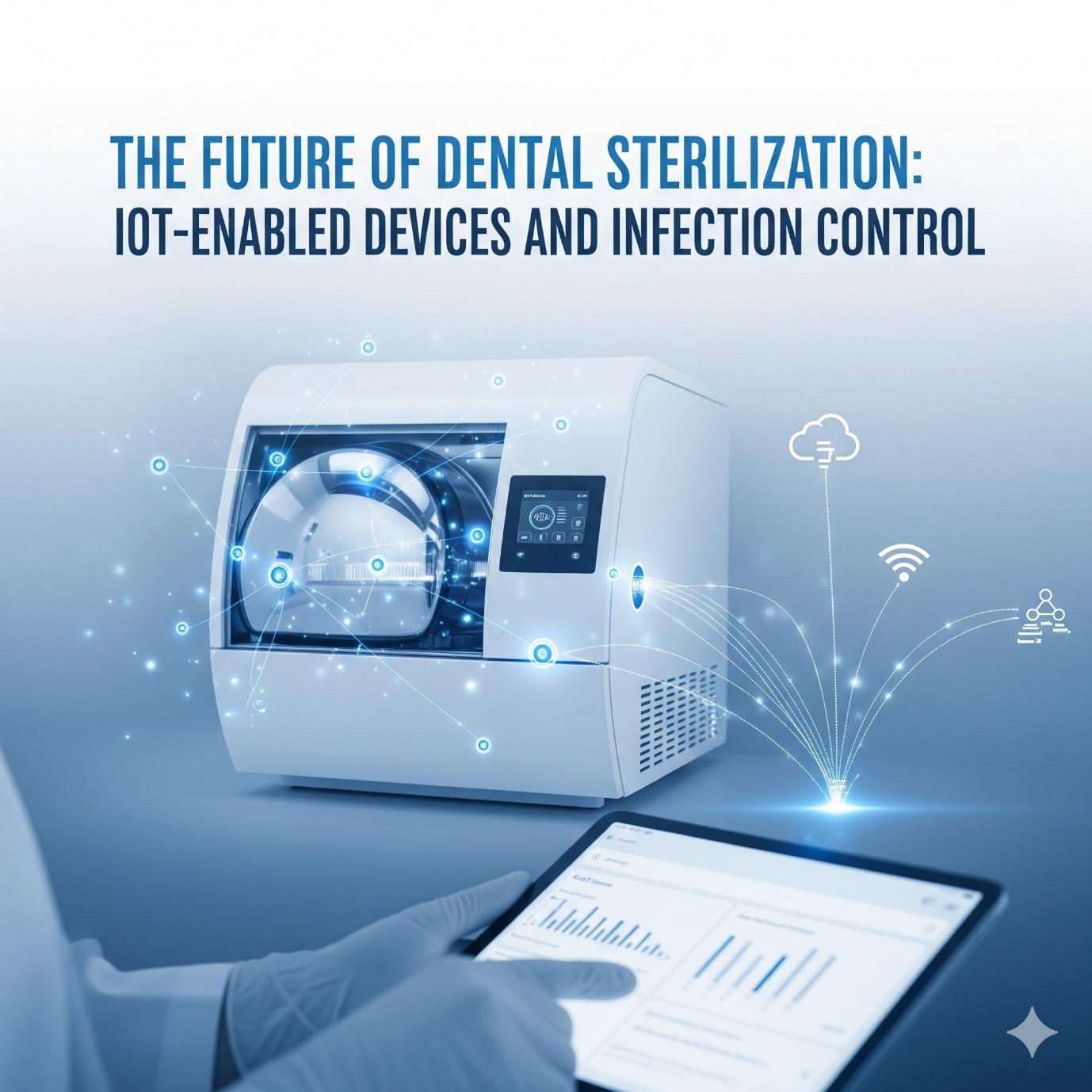As patients enter a dental clinic, a significant portion of their focus shifts to the waiting area, the tools, and perhaps the dentist’s grin. What they don’t usually see is the sterilization room, the place that quietly holds everything together. Infection control has always been part of dentistry, but today it’s no longer just “important.” It’s central to trust. And as with so many parts of healthcare, technology is stepping in to raise the bar. The Internet of Things (IoT) is now making sterilization more reliable, more transparent, and a lot less stressful for busy practices.
Why Sterilization Still Sits at the Core
Dentistry has advanced in incredible ways, from digital X-rays to laser treatments. But no matter how advanced the tools get, if sterilization fails, the whole system fails. Patients may not see the risk, but they feel the reassurance when safety is done right. Traditional autoclaves and manual record-keeping have done the job for years, yet they depend on human accuracy and humans, even the most careful ones, are not flawless. That’s where IoT steps in, acting less like a gadget upgrade and more like a safety net.
Smarter Cycles, Smarter Clinics
An IoT-enabled sterilizer doesn’t just run a cycle; it reports on it. Sensors track temperature, pressure, and timing down to exact standards. If something slips even slightly it sends alerts to staff devices. Instead of waiting until the end of the day to realize a cycle failed, clinics know instantly.
It sounds simple, but in a practice where dozens of instruments rotate in and out every hour, that real-time feedback can make the difference between smooth operations and a stressful backlog.
Compliance Without the Headaches
If you ask any dentist or assistant, record-keeping is one of the least glamorous parts of the job. Logs, signatures, timestamps, it’s tedious but necessary. Regulators demand proof and mistakes (even honest ones) can cause real problems. IoT sterilizers now handle this automatically, creating digital records tied to each instrument batch.
Imagine scanning a tray before use and seeing its entire sterilization history pop up, no binders, no messy handwriting, no second-guessing. For staff, it’s one less burden. For patients, though they may never see it, it’s one more reason to trust.
Less Downtime, Fewer Surprises
Every dental clinic has faced it: the sterilizer breaks down on a packed day, and suddenly appointments are shuffled, patients are frustrated, and the team is scrambling. Predictive maintenance is one of IoT’s underrated strengths which helps avoid this. By monitoring wear, water quality and usage patterns, these devices can warn of trouble before it becomes a crisis.
It doesn’t remove all surprises, but it does shift clinics from reacting at the last minute to planning repairs with far less drama.
Making Safety Visible
Traditionally, sterilization was hidden behind closed doors. Now, some practices are making it visible. IoT systems can present dashboards in waiting areas, illustrating real-time sterilization updates. Some utilize QR codes that patients can scan to confirm that instruments have been correctly sanitized.
It may appear excessive, but in a time increasingly aware of cleanliness, openness holds great significance. Patients don’t just want safe care; they want to see evidence of it.
Part of a Bigger System
One overlooked advantage of IoT sterilization is how easily it connects with other dental software. These systems can talk to patient scheduling, inventory tools, and even electronic health records. That means instruments aren’t just sterilized but they’re tracked, scheduled, and restocked automatically.
For staff, this reduces repetitive admin work. It results in more streamlined procedures for the practice. This leads to shorter wait times & enhanced experience for patients.
Looking Ahead: When AI Joins the Picture
IoT is the foundation, but AI is already starting to layer on top. Envision systems that evaluate sterilization information from numerous clinics, identifying trends, forecasting risks, and even recommending updated protocols. What’s routine today could soon be optimized in ways humans alone would never notice.
This isn’t sci-fi but it’s the natural next step. The pieces are already in motion, and the future of infection control is looking sharper.
Challenges We Can’t Ignore
Of course, adoption won’t be instant. IoT sterilizers cost more upfront, and smaller clinics may hesitate. Staff need training and as with any connected device, data security is a real concern. These aren’t obstacles, but are challenges that require attention. Over time, as technology matures and becomes more affordable, these barriers will shrink.
Conclusion
Sterilization might not be the part of dentistry patients talk about, but it is the part that makes everything else possible. With IoT-enabled devices, dental practices can ensure safer instruments, smoother compliance and fewer breakdowns, all while earning patient trust in new, more transparent ways. At the end of the day, the lesson is simple that smarter sterilization means safer care. And in a profession built on trust, that makes all the difference.
